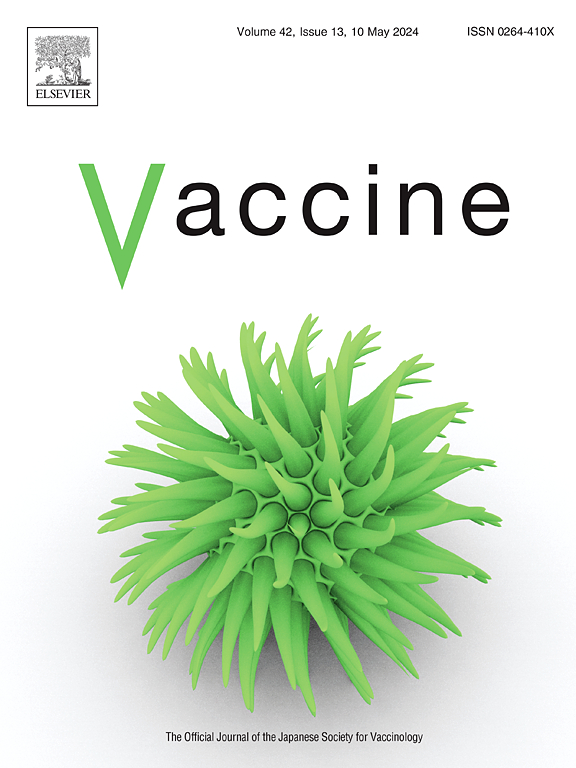一种评估疫苗诱导的免疫相关因素对感染和疾病进展的保护的统计方法:应用于ChAdOx1-S nCoV-19 3期试验
IF 4.5
3区 医学
Q2 IMMUNOLOGY
引用次数: 0
摘要
背景:保护相关因子(copps)被定义为与疫苗效力(VE)统计相关的免疫标记物,可用于加速疫苗开发。免疫反应的不同组成部分对于防止感染和防止从无症状感染发展为有症状或严重疾病可能很重要。然而,cop通常是针对这些结果单独评估的,这可能导致某些cop没有被识别出来。我们提出了一种新的统计框架,用于综合评估具有多种潜在结果的感染的cop。方法:我们建立了一个感染的自然史模型,可以识别感染和疾病进展的每个阶段的cop,并在贝叶斯估计框架中实现该模型。我们在模拟数据上验证了该模型,然后将其应用于来自ChAdOx1 nCoV-19 (AZD1222)疫苗II/III期试验COV002 (NCT04400838)的个体水平临床和血清中和和结合抗体数据。我们探索了VE和候选cop之间的逻辑和非参数(三次样条)关系。结果:在1000个模拟试验数据集中,模型的参数和非参数形式都准确地估计了免疫CoP和VE抗感染(静脉)和抗感染后症状进展(VEpr)之间的关系。在COV002相关子集(2227名参与者,5315份样本)中,SARS-CoV-2刺特异性IgG与VEin和VEpr均呈正相关(刺特异性IgG介导VE的平均比例,VEin为27% (95% CI 2- 88%), VEpr为41% (95% CI 0- 96%))。假中和抗体滴度与受体结合域(RBD)特异性血清IgG具有相似的相关性。结论:综合分析多种疾病结局和候选cop,可以识别在疾病进展的不同阶段起作用的cop,而单独评估结局时遗漏了这些cop。本文章由计算机程序翻译,如有差异,请以英文原文为准。
A statistical method for evaluating vaccine-induced immune correlates of protection against infection and disease progression: application to the ChAdOx1-S nCoV-19 phase 3 trial
Background
Correlates of protection (CoPs), defined as immune markers statistically correlated with vaccine efficacy (VE), can be used to accelerate vaccine development. Different components of the immune response may be important for protection against infection and against progression from asymptomatic infection to symptomatic or severe disease. However, CoPs are typically evaluated for these outcomes separately, which can lead to some CoPs not being identified. We propose a novel statistical framework for the integrated evaluation of CoPs for infections with multiple potential outcomes.
Methods
We developed a model of the natural history of an infection that can identify CoPs at each stage of infection and disease progression and implemented this model in a Bayesian estimation framework. We validated the model on simulated data then applied it to individual-level clinical and serum neutralising and binding antibody data from COV002 (NCT04400838), a phase II/III trial of the ChAdOx1 nCoV-19 (AZD1222) vaccine. We explored logistic and non-parametric (cubic spline) relationships between VE and the candidate CoPs.
Results
Both parametric and non-parametric forms of the model accurately estimated the relationships between the immune CoP and VE against infection () and against progression to symptoms given infection () in 1000 simulated trial datasets. In the COV002 correlates subset (2227 participants, 5315 samples), SARS-CoV-2 spike-specific IgG was positively associated with both and (average proportion of VE mediated by spike-specific IgG, 27 % (95 % CI 2–88 %) for and 41 % (95 % CI 0–96 %) for ). Pseudoneutralisation antibody titres and receptor binding domain (RBD) specific serum IgG showed similar correlations.
Conclusion
Integrated analysis of multiple disease outcomes and candidate CoPs enables the identification of CoPs that operate at different stages of disease progression, which are missed when evaluating outcomes separately.
求助全文
通过发布文献求助,成功后即可免费获取论文全文。
去求助
来源期刊

Vaccine
医学-免疫学
CiteScore
8.70
自引率
5.50%
发文量
992
审稿时长
131 days
期刊介绍:
Vaccine is unique in publishing the highest quality science across all disciplines relevant to the field of vaccinology - all original article submissions across basic and clinical research, vaccine manufacturing, history, public policy, behavioral science and ethics, social sciences, safety, and many other related areas are welcomed. The submission categories as given in the Guide for Authors indicate where we receive the most papers. Papers outside these major areas are also welcome and authors are encouraged to contact us with specific questions.
 求助内容:
求助内容: 应助结果提醒方式:
应助结果提醒方式:


